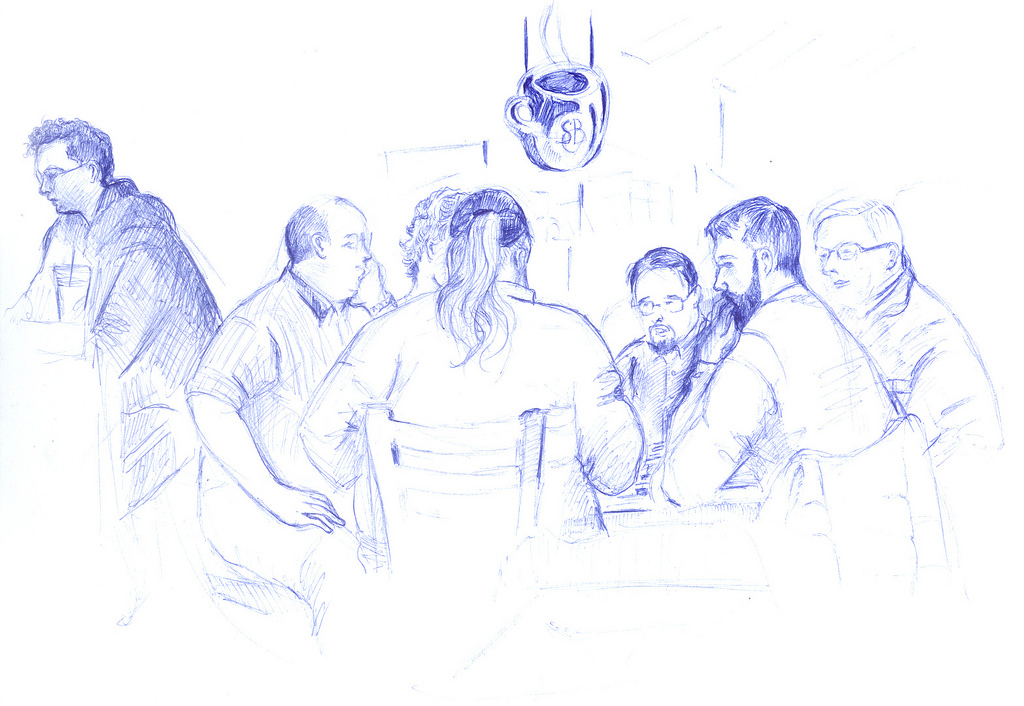Not a classic like Lord of the Rings: The Confrontation, neither is it the uninspiring and confused Lord of the Rings: The Search by the same designer. Lord of the Rings: The Duel by Peter Neugebauer holds the middle ground. A fun card game of quick combat between Gandalf and the Balrog over a chasm, on the bridge of Khazad Dum.
Each player has a deck with twenty-seven cards. Four duels will be played, three preliminary and one final. For the preliminary duels, each player will draw nine cards from his deck, play six, and save the remaining three for the final duel. After three rounds, during the final duel, the players will play all nine remaining cards; careful planning is important so that you have some good cards left.
Scoring is done on the cool bridge on which stylish wooden figures represent Gandalf and the Balrog. At the end of the game, whichever piece is closest to the top of the bridge, wins.
 |
| First round card play |
The cards themselves are pretty clever. On the right side is an attack strength, indicated by zero to four "magical symbols". On the left side is a defense strength, also indicated by a number of magical symbols. All cards are played next to each other in a line, so the card you are playing defends against the card played by your opponent, then attacks the other player's next card. For every undefended symbol, a point is scored, moving your cube up the energy track. After all cards are played in a round, the difference in the players' progress on the energy track determines how much the winner moves up the bridge, from one to three steps.
 |
| The Balrog and Gandalf at two points each. |
Carol, as Gandalf, started out by crushing me in the first duel and moving up two steps. I tied the game during the second duel. During the third duel, I went ahead by moving up a single step. Carol managed to win the fourth and final duel, moving up another step, and putting the game into a tie, which gave her (and the forces of good) the victory.
 |
| The end of the Final Duel |
Coming up: We recreate the War of the Roses in Rosenkonig.



.jpeg)
.jpeg)
.jpeg)














